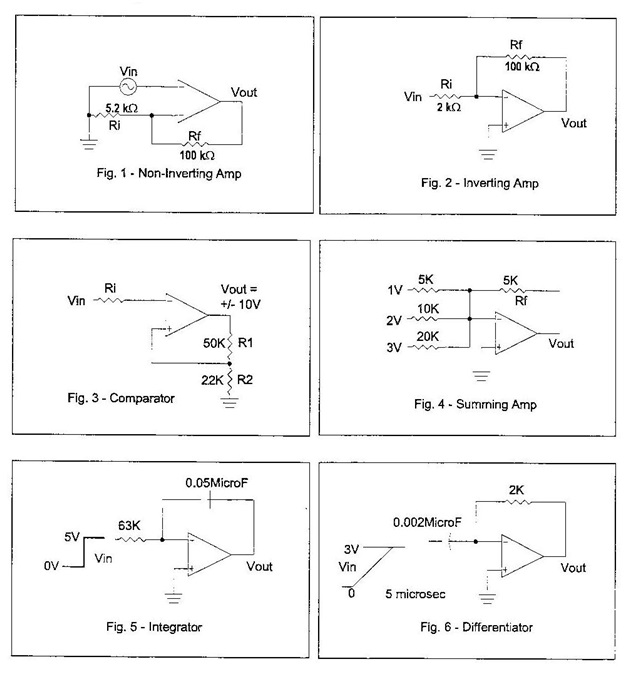Assignment:
Question 1. When a pulse is applied to an op-amp, the output goes from -40V to +5V in 0.6 microseconds. What is the slew rate?
Question 2. A certain diff-amp has a differential voltage gain of 1500 and a common-mode gain of 0.5. Determine the CMRR and express it in dB.
Question 3. A certain diff-amp has a differential voltage gain of 3000 and a CMRR of 90dB. A 1V rms, 60 Hz common-mode interface signal appears on both inputs. Determine the rms interference voltage on the output.
Question 4.

Consider the non-inverting amplifier shown in figure 1. Determine the closed-loop voltage gain. Please note that these figures will be used for the remaining questions.
Question 5. Using figure 1 find the input impedance using A = 200,000 and Zin = 3Mohms(open-loop).
Question 6. If the input voltage for a circuit of figure 2 is +0.1V DC, what is the voltage between the (-) and (+) terminals?
Question 7. A low pass filter has a critical frequency of 100kHz. What is its bandwidth?
Question 8. A high pass filter has a R = 2.6kohms and C = 0.0020microF. What is its critical frequency?
Question 9. Using figure 2 find the input impedance using A = 150,000 and Zin = 2Mohms(open-loop).
Question 10. The midrange open-loop gain of a certain op-amp is 150 dB. Negative feedback reduces this gain by 60 dB. What is the closed-loop gain?